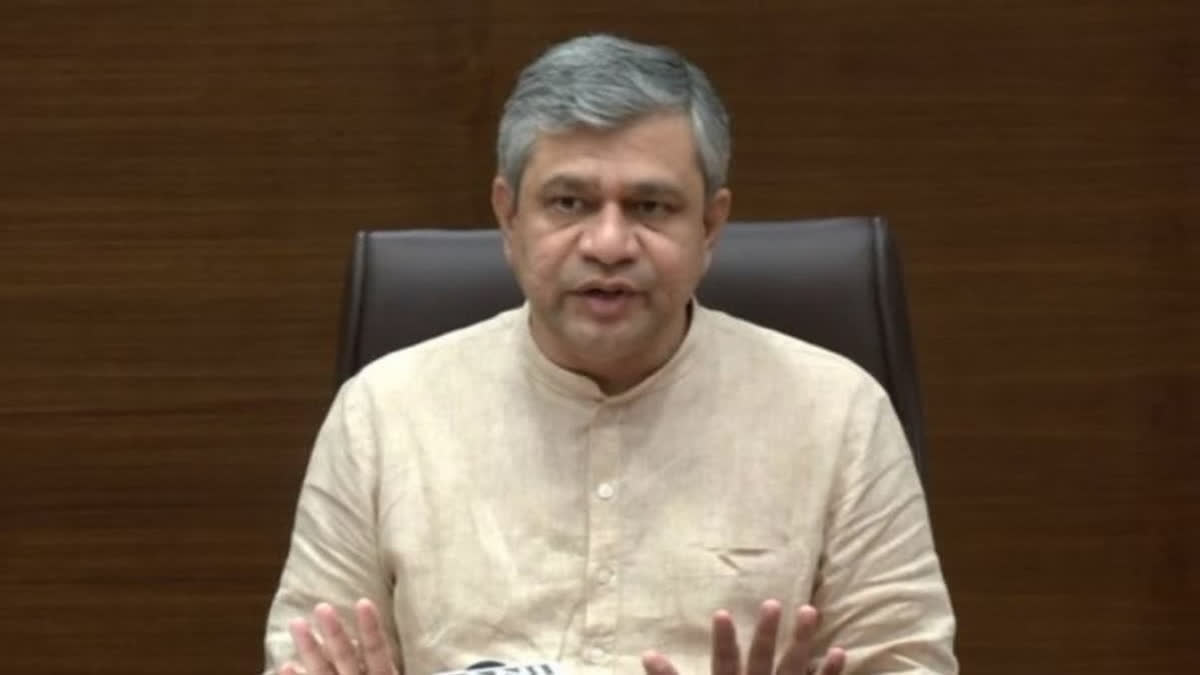New Delhi: The first Amrit Bharat train with push-pull technology will be launched by Prime Minister Narendra Modi from Ayodhya soon, Railway Minister Ashwini Vaishnaw said on Monday as he inspected its coaches and loco at New Delhi station. Vaishnaw spent about half-an-hour at the platform and visited the engine and some coaches of the train. "Prime Minister Narendra Modi will flag it off from Ayodhya very soon," he told the mediapersons.
He briefed about the new push-pull technology which, according to him, makes train operation much safer. Besides, he said a lot of new features has been introduced for the comfort and convenience of passengers. The railway minister said that two types of technology which are used world over in the running of trains are: distributed power technology and the push-pull technology.
"In the distributed power technology, every second or third coach has a motor which runs with the help of electricity supplied through overhead equipment. Vande Bharat trains are based on distributed power technology," Vaishnaw said. "The second technology is push-pull which means the train has two engines, one in the front side and the other one at its end. While the front engine pulls the train, the back engine, at the same time, pushes the train ahead," he added.
Vaishnaw said that a lot of changes were introduced in the train to incorporate push-pull technology which provides better acceleration and deceleration. "Better acceleration and deceleration help save time at bridges, curves and other points where trains have to run with a restricted speed," he said, adding that if th Amrit Bharat train runs between Delh to Kolkata, the total time to cover the distance will be about two hours lesser than that of a traditional train.
The railway minister heaped praise on Indian engineers saying that "it is a matter of great pride that both the technologies have been implemented in Indian railway by our own engineers". He highlighted Amrit Bharat's another significant feature which is the use of the latest technology to join the two coaches in such a way that it negates the jerk effect when the train starts and stops.
He said that in the old technology, which used to be practised in the 1990s, the coaches of the train were joined with the help of a kind of coupler due to which passengers felt a jerk when the train stopped or started. "The Amrit Bharat trains have a special type of coupler called semi-permanent coupler which negates jerk effect. It is safer in terms of operation of the train as well," Vaishnaw said.
"Since, it is a non-AC train, if it runs at any speed more than 100, it will face air pressure. So to minimize that, the space between the two coaches are completely covered and the whole train looks like one train-set," he said. According to Vaishnaw, special attention has been paid to design toilets to save as much water as possible. He stated that engines have been modified to give comfort to the locopilots.
"They are completely air-conditioned. Seat positions have been modified so that the driver gets maximum comfort while driving the train. Even the vibration inside the engine has been controlled with the help of technology so that it causes minimum fatigue to the drivers," Vaishnaw said. He added that from the passengers' comfort point of view, charging points have been provided at every seat and space for water bottles has been made.
"Even seats in general coaches have cushions to give comfort to the passengers. It has a specially-designed ramp to take the wheel-chair inside the coaches conveniently," the minister said. He further informed that the Indian Railway has conducted a trial run before the launch and the result was very encouraging and beyond his expectations.
He said that after the flagging off the train by PM Modi, the railway will conduct a general run of the train for four to five months to see if it causes any technical challenges. "After that 20 to 30 trains of this model will be made every month. We did the same thing with Vande Bharat. We ran the train for one year and then made improvements while enhancing productivity," Vaishnaw said. The train to be launched subsequently will have general class configuration going up to AC-II.



